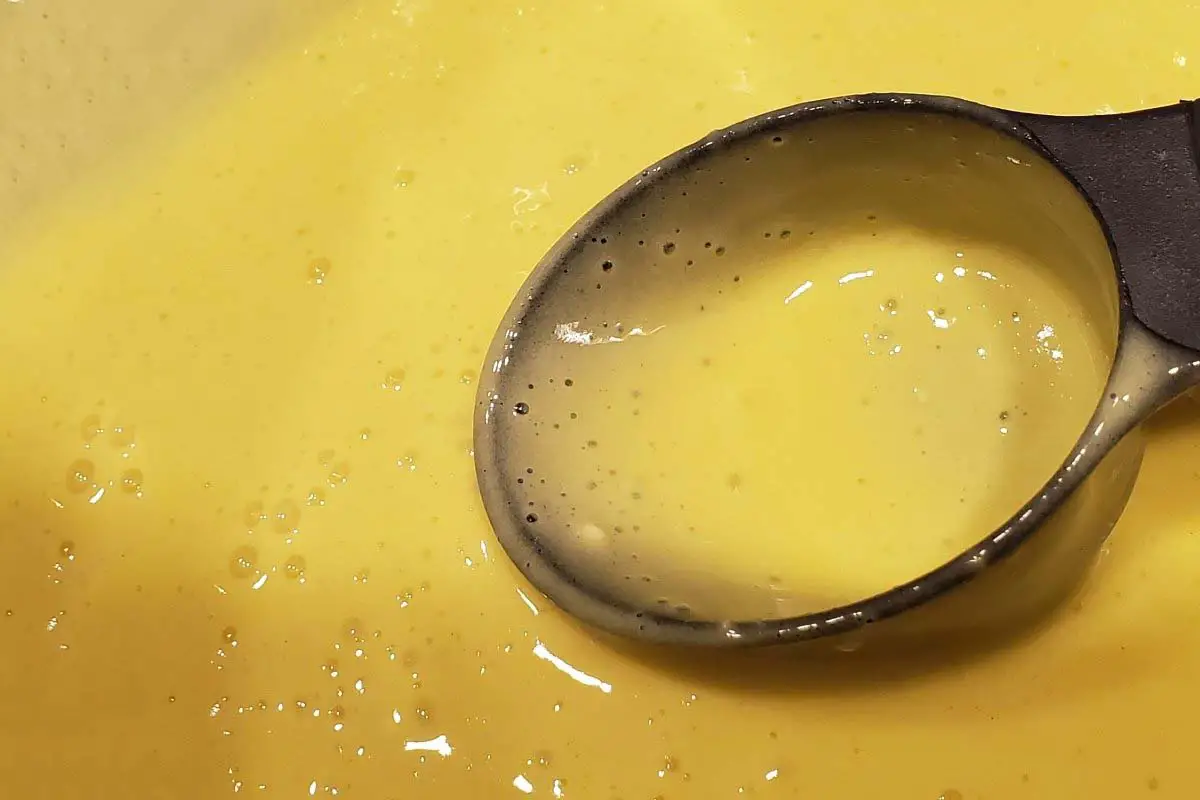Last Updated on January 2, 2023
Cakes are one of the most popular desserts around the world. It is a dessert novice and professional bakers enjoy making. However, one of the most common mistakes people makes when baking is overmixing cake batter.
Baking a cake requires precision. You have to measure the ingredients just right and mix them properly in every step. It is a delicate process that any person can easily mess up.
Of all the things that can go wrong while baking overmixing is one of the most common mistakes that are easily preventable. People often overmix their cake batter to ensure everything is properly combined, but it does more harm than it does good.
What Happens When Overmixing Cake Batter
Whether you lose track of time or are worried your ingredients aren’t fully combined, you can easily overmix your cake batter without even realizing it. This can be problematic, as it can affect the taste and texture of your cake. There’s not much you can do once it happens, so it is important to avoid overmixing.
When the cake batter is overmixed, it creates a dense, weak cake. The cake will be fragile, as the protein structure was weakened by too much mixing. Unlike light and fluffy cake, an overmixed one will likely be gummy, chewy, and unpleasant. Eventually, the density and weakness of the cake may cause it to collapse. Though overmixing can be easy to do, especially if you are new to baking, it can easily ruin your cake.
How to Avoid Overmixing Cake Batter
Fortunately, overmixing is something you can easily avoid. By monitoring your batter as you go, you can ensure you are mixing it only for the right amount. It can be easy to get distracted while baking, but these tips will help set you on the right track.
#1 Make Sure Your Ingredients Are At Room Temperature
Unless otherwise specified, all your cold ingredients should be brought to room temperature before making. This applies to ingredients like butter, eggs, milk, cream, and buttermilk.
Ingredients that are too cold may lead to your batter curdling. When this happens, many people instinctively try to beat the batter for longer to try to make it smooth. However, this can lead to overmixing and cause several problems with your cake.
Check out if You Can Freeze Cake Batter
#2 Carefully Read the Recipe Instructions Before Starting
Before you get baking, carefully read all the instructions and measure out your ingredients. Not only will this help the preparation go more smoothly, but it can also help you avoid any confusion beforehand.
You will know how long everything gets mixed ahead of time. You can easily overmix by struggling to understand the next step of the recipe if you didn’t read it all beforehand.
Beginner’s Baking Bible: 130+ Recipes and Techniques for New Bakers
#3 Understand Your Baking Verbs
There are so many different terms when it comes to baking. It can be easy for anyone to confuse them, especially if you are new to baking. Here are some standard mixing terms that can help you perfect your next cake:
- Beat: Combine ingredients until smooth and aerated by using a stand mixer, hand mixer, or whisk.
- Cream: The process of mixing fat (butter, cream cheese, or shortening) with sugar. It is typically done with a hand or stand mixer and will likely take a few minutes.
- Whip: Mix until soft, stiff peaks form. Typically only done for cream or egg whites.
- Fold A gentle method that carefully combines ingredients until just combined by using a rubber spatula.
- Mix: A generic term for combining ingredients. No special method to follow.
#4 How Long to Mix Cake Batter: Pay Close Attention and Stop Mixing as Soon as Ingredients are Fully Combined
Though it can be tempting to multitask when you bake, you want to avoid doing this. You should pay close attention to your ingredients when mixing, as the time it takes to fully combine may vary.
Be certain to stop mixing once you notice your dry ingredients have fully incorporated into your wet ingredients. There is no need to mix any longer than that unless otherwise specified in the recipe.

Most recipes that use a mixer will call for the speed to be low or medium when mixing the dry ingredients with the wet ones. Avoid setting your mixer to high speed unless stated.
How Do You Fix Overmixed Cake Mix?
Unfortunately, once you’ve overmixed your cake mix, it’s typically impossible to bring it back to how it once was. That’s not too safe the cake will be inedible when baked; in fact, it’ll likely be perfectly usable…it just may not taste quite as good as what you’d usually expect. Most bakers will call for the entire batter to be thrown away and that it’s best to start the whole cake again. If your cake is for a paying customer or a celebration, I’d tend to agree. But if it isn’t for anything special, you may not want to waste your cake batter!
If this is the case, you can try to add a tablespoon of flour. If this doesn’t bring the batter together, you can add up to a few more tablespoons of flour. If it’s still overmixed at this point, there is likely no salvaging it. It’ll likely bake as a very dense cake, but is completely edible.
It can be tempting to overmix cake batter. You’ll usually be hoping for a nice smooth batter, that’s easily pourable and aesthetically pleasing. However, that isn’t always the case. When it comes to cake mix, it’s suggested that you keep mixing until it gets to the point that the flour has just disappeared. At this point, you should stop straight away; despite any urge, you may have to keep mixing that batter.
It’s also worth mentioning that if you’re making foods such as pancakes and waffles, the batter doesn’t have to be completely smooth and if lumps remain, it isn’t the end of the world. If you remove those lumps, you’ll likely end up with a very unpleasant pancake or waffle!
You should also always mix your cake mix on a low setting if you’re using a mixer. This is because if you use a higher setting, your mix will become overmixed far quicker than it typically would and you may ruin your cake batter without even realizing it. It’s important to remember that when the recipe calls for the ingredients to be “just incorporated”, it does mean that!
What Does Overmixed Batter Look Like?
There are a few telltale signs to watch out for when you’ve overmixed your cake batter. You may think that it’s impossible to tell before the cake batter has been baked, but that’s not the case. If you’ve overmixed, the batter itself will be dense and will also be more elastic or stretchy than you’re used to. The batter typically looks a lot smoother too; this is because of how much it’s been overmixed. Once the cakes have been baked, the overmixing will have caused a much denser, flatter cake, and not only that, but the texture will be completely different too.
Whereas normally, cakes have an airy and light texture, cakes that have been overmixed will be chewy, gummy, and dense. While those textures may be perfect for cookies, it is definitely not what you want from your cakes. As well as this, your overmixed cakes will lose their structure much quicker than their perfectly mixed counterparts; they’re known to sink in the middle.
No More Overmixing Your Cake Batter
Overmixing your cake batter is a common mistake to make, but it can be easily avoided. Be sure to follow all the instructions in your recipe and pay close attention to the batter when mixing. Only mix until it is just combined, as mixing for longer than the recipe says will result in a dense, tough cake.
Do you have any questions about overmixing cake batter? If so, please ask them in the comments down below.
Read more about What To Do With Undercooked Cake – 3 Easy Ways To Save It

Ever since she was a young girl, Anna has been a lover of desserts. As an adult, she enjoys
baking a variety of desserts from cakes, cookies, brownies, bread, and more from scratch. She
enjoys sharing her passion for baking with others who also have a sweet tooth. From properly
measuring ingredients to making sure they are the correct temperature, Anna knows the
importance small details can make in baking. She wants to share her experience with others in
hopes they can make the most delicious baked goods. When she’s not busy blogging, Anna
enjoys trying new recipes in the kitchen.


